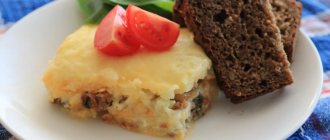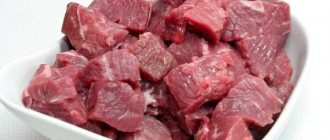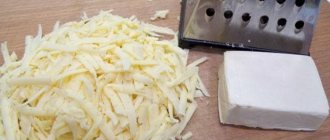Dauphine potatoes - what kind of variety are they?
Dauphine potatoes are a mid-season variety. The ripening period averages 85-95 days. The variety was bred by Dutch breeders relatively recently and quickly fell in love with summer residents. Reviews from gardeners about Dauphine potatoes are positive; they are distinguished by high yields and excellent taste.
For your information! The average yield per hectare is 250 centners, the number of tubers under one bush reaches 18-20 pieces.
Among the main positive characteristics of Dauphiné are resistance to scab and late blight diseases. Traditional pests also avoid the variety; nematodes and the Colorado potato beetle, which pose a great danger to potatoes, rarely spoil bushes and root crops. This fact greatly facilitates the process of caring for the plant and makes it less labor-intensive.
The description of the Dauphine variety tuber is similar to that of other Dutch varieties: attractive, smooth surface, regular shape. The color of the potato is beige, the flesh is slightly lighter. The weight of one varies from 200 to 350 g. The light pulp is characterized by a high starch content, excellent taste and is suitable for preparing almost any potato dishes. It is rightfully considered the most delicious Dutch potato variety.
Although the Dauphine variety was bred in Holland, it is adapted to the conditions of the Russian climate. It grows well in the conditions of central Russia, in the zone of arid agriculture with some difficulties, since potatoes require systematic, abundant watering.
Good old classics: from stove to table
Let's start the ceremony. To do this, peel the potatoes, wash them and cut them into thin slices. You can use a shredder to make them the same. Place them in a wide bowl and season well with salt and pepper. Grate the cheese on a medium grater and add half of it to the potatoes. Separately, beat the egg with the milk-cream mixture in a blender and add to the potatoes, stir. First, very generously rub the inside of a high-sided baking dish with garlic, then with butter. Place the potato mixture in it, sprinkle with cheese and place pieces of butter on top. Place the dish in a preheated oven and bake for about 40 minutes at 160 degrees. When your Dauphine potatoes acquire a golden brown crust, the recipe recommends turning off the oven, but leaving the baking sheet in it for another couple of minutes, and only then removing it. The delicacy should be served with a salad of fresh vegetables and a bottle of good white wine.
The main advantages and disadvantages of the variety
The main advantages of the variety include the following:
- high yield:
- great taste;
- ease of care;
- resistance to pests and diseases;
- shelf life (8-9 months with preservation of appearance and taste).
The main requirements for growing the Dauphine variety, which cannot be called disadvantages, are to ensure regular, high-quality, abundant watering and nutrient saturation of the soil.
Planting and growing Dauphiné potatoes
Growing potatoes begins with choosing a planting site and proper soil preparation. The bed should be located on a well-lit and level area (without slope). It is advisable to exclude wind blowing, which dries out the soil. The soil mixture should be light and nutritious, and drain water well.
Note! You need to start preparing for planting in the fall: plow the bed, apply potash and phosphate fertilizers. In spring, the soil needs to be loosened with the addition of urea.
Tubers for planting are selected of medium size, well preserved, and having at least 5 eyes. High-quality planting material ensures high germination and reproduction. A month before the planned planting, potatoes are germinated in a dark room. The shoots that appear should not be too long, otherwise they will break off when planted in the ground.
It is important to choose the right time for planting. The earth should warm up to about 10 °C.
The Dauphine variety requires fairly free planting; 7-9 tubers are planted per 1 m². Large nutrient area, availability of water and light guarantee a higher yield due to large bushes with strong roots.
The best planting method for obtaining a high yield of the Dauphine variety is considered to be the method of forming high ridges. The scheme assumes the presence of large row spacing, up to 70-85 cm. The density of the bushes in the rows also needs to be small, leaving 35 cm between the bushes. This, at first glance, irrational approach actually guarantees a high yield.
Potatoes with spices
Dauphine potatoes are baked in the oven in a slightly different way. Although the cooking technology is close to the previous recipe. You again need 1 kg of the main vegetable, 2 eggs, 8 g of butter, 50 g of milk, a little nutmeg and ground pepper, coriander, salt to taste and a piece of Swiss cheese. Cut the peeled potatoes into slices. Rub the baking sheet generously with garlic, then with butter. Layer the potatoes, sprinkling them with a mixture of salt and spices. Beat the eggs into the milk, mix, lightly whisking, and pour over the potatoes. Place it in a hot oven and roast for about 45 minutes. Just before removing, sprinkle with grated cheese. Spicy and tasty, right? And if you serve a good portion of meat and mustard with the potatoes, you won’t be able to pull your ears away from the food at all!
How to properly care for the variety
After the emergence (after a few weeks) of seedlings, the bed must be weeded and hilled using soil from the rows. Hilling is carried out to a height of 12 cm, after removing all weeds. The next similar procedure is carried out 4-5 weeks before the tops are closed. There is no need to carry out further hillings.
If the soil is sufficiently nutritious and properly prepared, then additional fertilizing and fertilizing are not required during potato growth. If the soil is quite poor and heavy, then the ideal option would be phosphate fertilizers, which will increase the yield and starch content in the tubers.
Note! Excessive application of organic fertilizers can have a negative side - the appearance of mole crickets, which significantly harms the future harvest.
The Dauphine variety is quite large-fruited, so special attention must be paid to watering. Potatoes need to be watered abundantly (especially during the tuber setting period), but not often. 3 high-quality procedures per season will be enough. Considering that Dutch varieties are grown to form high ridges, overhead watering can destroy them. It is advisable to use drip irrigation; if this is not possible, then water between the rows, which can be additionally mulched with mowed grass. It is worth remembering that the variety does not tolerate stagnant water and is also not resistant to drought.
Dauphiné donuts: how to fry
To prepare “Dauphine fries”, or “Dauphine” donuts, you need half a kilogram of potatoes, and for the dough - 4 eggs, 130 g of flour, a glass of water, 80 g of butter, salt, ground pepper and nutmeg. Boil the potatoes in their jackets in salted water. Then peel and mash into a puree, but without any liquid. Prepare the choux pastry separately, adding grated nuts into it, just a little, so that the smell is not strong. Pour the puree into the dough, stir until smooth, add salt or pepper if necessary. By the way, to give the “dauphine” a brighter look, season the workpiece with a small amount of turmeric powder. Heat oil in a deep fryer or just a cast iron pot, scoop up lumps of dough with a teaspoon and send to fry. During the heat treatment process, potato donuts expand well in volume and become golden. Remove them with a slotted spoon, place them on a paper towel and fry the next batch. Roast poultry, lettuce, fresh cucumbers and table wine are ideal for the Dauphine potato donuts.
A delicious side dish, dauphinois potatoes or dauphine potatoes is a famous dish of French cuisine, quite widespread in the world and prepared in many variations. Essentially, this dish is a gratin - baked in cream and covered with a crust of hard cheese, raw or previously boiled potatoes in cream. In French cuisine this dish is called Gratin Dauphinois.
The history of the appearance of this side dish begins much later than the discovery of the New World and the appearance of potatoes in Europe. History says that the Dauphine potato gratin was first officially mentioned around 1788 during a holiday dinner for employees of the city of Gap, in Provence. Historically, the city belongs to the Dauphiné region, in the Alps with its center in the city of Grenoble.
Baked potatoes with cheese and cream or milk are widely known around the world, especially in the USA and Canada. Typically, Dauphiné potatoes are made from raw tubers, which are thinly sliced and then boiled in milk or cream. Then the potatoes are baked under a cheese crust. Depending on the sequence of preparation and general technology, very similar dishes can be very different, but always tasty.
Among the well-known options are baking ready-made boiled (or baked) potatoes in cream, boiling potatoes in chicken broth - the dishes have different names, but the essence does not change much. The taste and consistency of the dish can vary greatly according to your wishes. The composition may include a wide variety of additives - anchovies, asparagus, onions, etc.
The culinary technique of gratinization (gratin - crust) is well known to us from the meat dish "French style" and. With a cheese crust, all baked dishes get a pleasant golden brown color and a special taste. And the side dish of Dauphine potatoes is no exception.
For this dish, it is better to choose potatoes with yellow rather than white centers. We have such varieties, with a dark pink surface, which are common. These varieties are quite starchy and cook and bake well. In the side dish of dauphine potatoes, starch is very important; it ensures the binding of the potatoes with the cream, and provides the necessary density of the side dish.
How to harvest and store crops
Timely harvesting is important. Potatoes that have been in the ground for a long time lose their taste value and shorten their shelf life. Dried tops indicate the ripeness of the tuber and readiness for harvesting.
The harvest time depends on the purpose for which the potatoes will be used. Seed material is collected much earlier - no later than the beginning of August. At the same time, you need to clear the bed of weeds and remove the tops. After removing the tops, a protective skin is formed on the potato. This happens after about 2 weeks, then the bulk of the crop can be harvested.
After being removed from the ground, the tubers are sorted: they are cleaned of adhering soil and mechanically damaged tubers are removed. Next, the potatoes are placed under a canopy or in any other cool, dark place for some time (7-10 days). This is done with the aim of forming cork tissue on the tubers, which promotes longer storage.
Sorted and dried tubers are collected in containers and sent for storage. It is best to use plastic or wooden boxes as containers. The storage facility must meet certain conditions. The room should be dark, well ventilated, and maintain a stable temperature of 2-4 °C. In such conditions, potatoes do not germinate and do not freeze. It is advisable to fill the bottom with a sand mixture in order to absorb excess moisture.
Ingredients:
- 1 kilogram of potatoes;
- 1 glass of cream 10% fat;
- 1 fresh chicken egg;
- 1 pinch of nutmeg;
- 100 grams of hard cheese;
- 1 clove of garlic;
- 80 grams of butter;
- 2-3 green onions;
- 1 teaspoon salt;
- ⅛ teaspoon ground black pepper.
The most delicious Dauphine potatoes in the oven in French. Step by step recipe
- Mix soft butter (take it out in advance and let it sit at room temperature) with a clove of garlic passed through a press. Mix well and grease the baking dish with this oil (I have a ceramic heat-resistant rectangular dish).
- Peel the potatoes, wash them and cut them into slices 2 millimeters thick.
- Grate hard cheese on a coarse grater into a separate bowl.
- Mix half the cheese with a raw egg, a glass of cream and a pinch of nutmeg, salt and pepper (according to the recipe). Mix everything well.
- Advice. The best cream is the one you make yourself. You can look at the recipe for cream of any fat content on our website “Very Tasty”.
- Place the prepared chopped potatoes beautifully in a mold and fill with the cheese and milk mixture.
- Sprinkle the remaining cheese on top of the Dauphine potatoes.
- Preheat the oven to 200 degrees and place the pan with potatoes into it. We will bake for 40 minutes (approximately: it all depends on the characteristics of your oven). Check readiness with a match or toothpick.
- Sprinkle the baked potatoes with cheese on top with green onions and serve.
French-style potatoes in the oven can be prepared not only for dinner: the dish is so beautiful that it will look great on the holiday table. We prepared a wonderful side dish for meat dishes and meat in just a few minutes (not counting the baking time). Baked potatoes go well with pickles, sauerkraut and vegetable salads. Dauphiné potatoes are tasty, bright and aromatic. The team of the “Very Tasty” site wishes you bon appetit: stay with us.
Diseases and pests
The Dauphine variety is famous for its resistance to diseases and pests. However, with improper care, the plant may be damaged by scab, late blight, and the Colorado potato beetle. To eliminate this possibility, it is advisable to disinfect the tubers before planting. If it was not possible to avoid the disease, you should use treatment with specialized fungicides, and fight insects manually, collecting beetles and caterpillars from bushes and removing larvae on the leaves, or use insecticides. Depending on the circumstances, preventive spraying can be carried out before the plant buds.
French classics
Any housewife can prepare delicious Dauphinois potatoes at home. The classic recipe from Provençal masters requires the following required components:
600 grams of large potatoes, 4 cloves of garlic, ½ onion, 300 milliliters of heavy cream (20-33%), thyme (6 stalks or 1 teaspoon dried), rosemary (2 stalks or ½ teaspoon dried), salt, nutmeg (1/2 piece or half a teaspoon of powder), pepper and 50 grams of butter.
Cooking method:
- First you need to do the refueling. To do this, finely chop the onion and garlic, place in a saucepan and pour in cream. After boiling, remove the ingredients from the heat, add the aromatic herbs, and then strain once the mixture has cooled.
- Now comes the main point. First of all, you need to chop the potatoes into thin slices and put them in layers in a mold. It is better to take small dishes so that the dish turns out tall. Each layer should be coated with oil, pepper, a little salt and sprinkled with aromatic herbs.
- Pour cream over the products, being careful not to damage the integrity of the structure.
- Cover the pan with foil and place in the oven, preheated to 165 degrees, for half an hour. The potatoes should be well baked.
- Remove the foil, increase the temperature to 200 degrees and put the dish back in the oven so that it can brown on top.
Classic Dauphinois is best eaten chilled. This will take about 20 minutes, no more.
Let's prepare the ingredients: potatoes, cheese, garlic, butter and salt.
Peel the potatoes. We cut a circle on one side so that the potatoes can easily stand, and on the opposite side we make cuts from top to bottom, not reaching the edge, about 0.5 cm. The slices should be like French fries. Salt the potatoes (if the hard cheese is salty, then the amount of salt must be reduced). Fill the prepared form with potatoes.
We cut the cheese in any way and place it between the sliced blocks, between the potatoes and on top. Place in the oven, preheated to 180 degrees.
Baking time will depend on the type of potato. I baked potatoes from last year's harvest - it took me 40 minutes. If you cook new potatoes, the baking time will be reduced by 10-15 minutes.
The most tender, very tasty Dauphine potatoes can be served. If desired, decorate with a sprig of greenery.
Bon appetit!
Potatoes are a vegetable no less popular in France than in our area. And it is to this country that we owe an amazingly tasty dish, the popularity of which has gone far beyond its geographical borders.
Classification
The State Register of Russia includes about four hundred varieties. Below we will describe potato varieties with photos of domestic and foreign selection.
In order to choose one or another potato variety, you first need to understand the conditions under which it will grow and why it is planted.
You should also pay attention to:
- ripening period
- disease resistance
- taste qualities
- need for care
According to the ripening period, potatoes are divided into groups:
- extra early (tubers ripen in 34 – 50 days)
- early (the first harvest can be obtained 50 - 65 days after planting)
- mid-early (ripening period up to 80 days)
- mid-season (the ripening period of tubers is up to 3 months or more)
- medium-late (maximum period - 110 days)
- late-ripening (the first tubers need to wait up to 4 months or more)
According to their intended purpose, potatoes are divided into the following varieties:
- table tubers contain up to 20% starch. Intended for human consumption
- feed - characterized by a large amount of protein and starch in the composition. These potatoes are used to feed livestock on farms.
- technical - alcohol and starch are made from such varieties. Tubers should be rich in starch - more than 16% and contain a small amount of protein
- universal – starch content – 16 – 18%. Suitable for both human consumption and animal feeding
Domestic varieties are plants of Russian, Ukrainian, Belarusian selection.
Fragrant "Graten"
Dauphinois is a variation of the popular French dish that uses cheese or breadcrumbs to create a crispy crust. It usually contains five main components. For the standard version you may need:
400 milliliters of cream, a kilogram of potatoes, 2 cloves of garlic, a teaspoon of ground nutmeg and 300 grams of any hard cheese.
The entire cooking process consists of several mandatory steps:
- First, the products need to be prepared. To do this, potatoes should be peeled and chopped into thin slices, cheese should be grated on a coarse grater, and garlic should be squeezed through a press.
- Next you should start preparing the sauce. To do this, you need to heat the cream without bringing it to a boil, and then add 2/3 of the grated cheese and wait until it melts. Then add nutmeg and garlic and heat the mass thoroughly until it becomes homogeneous.
- Place one layer of potatoes in the pan and pour the sauce over it. The procedure must be repeated until the products run out. The last layer of such a structure should certainly be sauce.
- Place the form in the oven, which is already preheated to 180 degrees, and bake for 40 minutes.
- Sprinkle the remaining cheese on top of the baked product and place the dish in the oven for another 5 minutes.
After this, the fragrant gratin with a golden brown crust can be cut and placed on plates.










